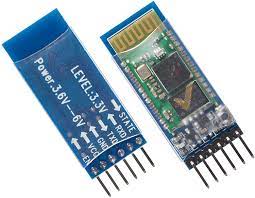A Small intro to carbon fibres

Who want to spend more in money and risk when there are ways to cut. Yes, It takes hundreds to thousands of crores to make a Single Rocket launch. It doesn’t take ten seconds to lose all that investment if a small thing went wrong. The expenses for rocket manufacturing and launch increases exponentially with mass.Because, Rockets has to carry fuel for fuel and at the same time we need high strength , low mass , corrosive resistant fuel containers and these to add mass , all the surface material of rocket, engines , payloads everything add mass.And the goal of us is to cut mass everything possible without compromising strength and capabilities of rocket.
Now we need a material that can give all best properties we need like low weight, high strength,stiffness,high temperature withstand,corrosive resistant, chemical resistant and many…. We can find all these different properties in different materials but what we need is to find a material that have all these properties at best.
In recent times we found such material called Carbon Fibre. This literally can change the aerospace technologies with research and development. In this article we are going to explore all the brief details about this material.
Preparation steps in manufacturing Carbon Fibres
The process of preparing carbon fiber typically involves several steps, which may vary depending on the specific manufacturing process used. However, some common steps involved in the preparation of carbon fiber include:
Precursor preparation
Carbon fiber is typically made from a precursor material, which is a polymeric material such as polyacrylonitrile (PAN), rayon, or pitch. The precursor material is usually spun into fibers or yarns and then wound onto bobbins.
Stabilization
The precursor fibers are heated in air to a temperature of around 200-300°C, which causes them to undergo a process called stabilization. During stabilization, the fibres are oxidized and crosslinked, which helps to prevent them from shrinking or melting when they are later heated to high temperatures.
Carbonization
The stabilized fibres are then heated to a temperature of around 1000-3000°C in an inert atmosphere, such as nitrogen or argon. This process, called carbonization, causes the fibers to lose their non-carbon elements and become mostly composed of carbon. The high-temperature process causes the fibres to become more ordered, which gives them their characteristic strength and stiffness.
Surface treatment
After carbonization, the carbon fibers may undergo a surface treatment process, such as sizing or coating with a protective layer. This helps to improve their adhesion to other materials and protect them from damage.
Spinning and weaving
The carbon fibers are typically spun into yarns or woven into fabrics, which can then be used to create composite materials.
Final processing
Finally, the carbon fibers or carbon fiber composites may undergo additional processing steps, such as machining, finishing, or curing, depending on the specific application.
Properties of Carbon Fibres
There are many useful properties and advantages with carbon fibres and here we have few of them.
High strength-to-weight ratio
Carbon fibres are extremely strong and stiff, yet lightweight, giving them a high strength-to-weight ratio. This makes them an ideal material for applications that require high strength and low weight, such as in the aerospace, automotive, and sports industries.
Fatigue resistance
Carbon fibres have excellent fatigue resistance, which means they can withstand repeated cycles of stress and strain without degrading or failing. This property makes them ideal for use in high-performance applications, such as in sports equipment and aircraft components.
High stiffness
These material has high stiffness, which means they do not deform significantly under load. This makes them an ideal material for applications that require high dimensional stability and precision, such as in aerospace, automotive and sporting goods
Corrosion resistance
Carbon fibres are highly resistant to corrosion, making them ideal for use in harsh environments where exposure to moisture, salt, or chemicals is a concern.
Chemical resistance
Carbon fibres are resistant to most chemicals, making them suitable for use in harsh environments.
Low thermal expansion coefficient
Carbon fibres have a low thermal expansion coefficient, which means they do not expand or contract significantly with changes in temperature. This makes them useful in applications where dimensional stability is critical.
Electrical conductivity
Carbon fibres are highly conductive, making them useful in applications that require electrical conductivity.
Design flexibility
Carbon fibres can be formed into a variety of shapes and sizes, allowing for greater design flexibility and customisation.
High temperature tolerance
These can withstand high temperatures without losing their strength or stiffness, making them useful in high-temperature applications such as aircraft engines and turbines.
Non-magnetic
Carbon fibres are non-magnetic, making them ideal for use in applications where magnetic interference is a concern, such as in medical imaging equipment or electronics.
High thermal conductivity
These have excellent thermal conductivity(up-to 5-100 W/mK (watts per meter-Kelvin) compared to many polymers and ceramics, which allows them to dissipate heat quickly and evenly. This makes them ideal for use in high-temperature applications, such as aerospace and automotive components. Thermal conductivity of carbon fibre depends on factors like, diameter of fibre , orientation and temperature.
Challenges with Carbon Fibres
However, carbon fibre is not without its challenges. Here we have few main challenges.
- High cost: Carbon fibres are relatively expensive compared to other materials, which can limit their use in some applications.
- Brittleness: Carbon fibers can be brittle and may fracture or crack under certain types of stress. This can make them less suitable for applications that require high toughness or impact resistance.
- Environmental impact: The production of carbon fibers can have environmental impacts, including the release of greenhouse gases and the use of large amounts of energy and resources.
- Surface treatment: The surface of carbon fibres can be difficult to bond or coat with other materials, which can limit their use in certain applications.


